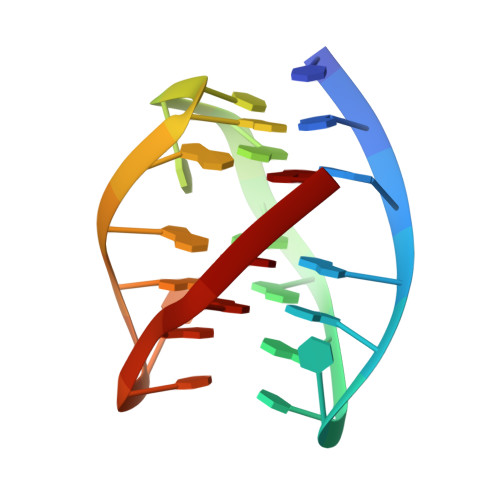Phen-DC 3 Induces Refolding of Human Telomeric DNA into a Chair-Type Antiparallel G-Quadruplex through Ligand Intercalation.
Ghosh, A., Trajkovski, M., Teulade-Fichou, M.P., Gabelica, V., Plavec, J.(2022) Angew Chem Int Ed Engl 61: e202207384-e202207384
- PubMed: 35993443
- DOI: https://doi.org/10.1002/anie.202207384
- Primary Citation of Related Structures:
7Z9L - PubMed Abstract:
Human telomeric G-quadruplex DNA structures are attractive anticancer drug targets, but the target's polymorphism complicates the drug design: different ligands prefer different folds, and very few complexes have been solved at high resolution. Here we report that Phen-DC 3 , one of the most prominent G-quadruplex ligands in terms of high binding affinity and selectivity, causes dTAGGG(TTAGGG) 3 to completely change its fold in KCl solution from a hybrid-1 to an antiparallel chair-type structure, wherein the ligand intercalates between a two-quartet unit and a pseudo-quartet, thereby ejecting one potassium ion. This unprecedented high-resolution NMR structure shows for the first time a true ligand intercalation into an intramolecular G-quadruplex.
- CNRS, INSERM, ARNA, UMR 5320, U1212, IECB, Université de Bordeaux, 33600, Pessac, France.
Organizational Affiliation:

















